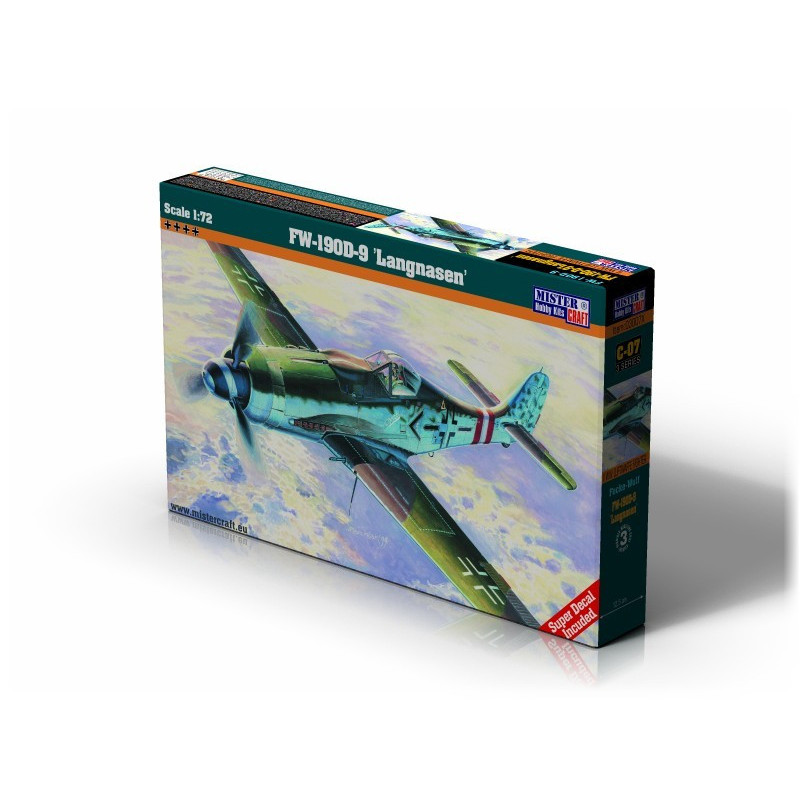- New









 Security policy(edit with the Customer Reassurance module)
Security policy(edit with the Customer Reassurance module) Delivery policy(edit with the Customer Reassurance module)
Delivery policy(edit with the Customer Reassurance module) Return policy(edit with the Customer Reassurance module)
Return policy(edit with the Customer Reassurance module)The Focke-Wulf Fw 190 Würger was used by the Luftwaffe during the Second World War in a variety of roles. Like the Messerschmitt Bf 109, the Fw 190 was employed as a "workhorse", and proved suitable for a wide variety of roles, including air superiority fighter, strike fighter, ground-attack aircraft, escort fighter, and operated with less success as a night fighter. It served on all the German fronts: Eastern Front, Western Front, North African Campaign and the Defence of the Reich.
When it was first introduced in August 1941, it quickly proved to be superior in all but turn radius to the Royal Air Force (RAF) front-line fighter, the Spitfire Mk. V variant. The 190 wrested air superiority away from the RAF until the introduction of the vastly improved Spitfire Mk. IX in July 1942 restored qualitative parity. The Fw 190 made its air combat debut on the Eastern Front much later, in November/December 1942. The Fw 190 made a significant impact seeing service as a fighter and fighter-bomber. The fighter and its pilots proved just as capable as the Bf 109 in aerial combat, and in the opinion of German pilots who had flown both fighters, the Fw 190 presented increased firepower and manoeuvrability at low to medium altitude.
About 700 aircraft were transferred to the Fw 190 D-9 line (production was higher, but some of the aircraft were destroyed by Allied air raids). This version was based on the A-8 airframe, so there were no other versions between it and the D-2. The prototype trials lasted from May to August 1944, and the serial production itself also started in August 1944. The Jumo 213 A-1 engine was used for the propulsion, the hull length was increased to 10.91 m. The armament was two MG 131 MG 131 engines above the engine and two plot MG 151 / 20E at the base of the wings. The plane could also carry a bomb or an additional fuel tank on an under-fuselage ETC 504 ejector.
Data sheet
Specific References
No customer reviews for the moment.